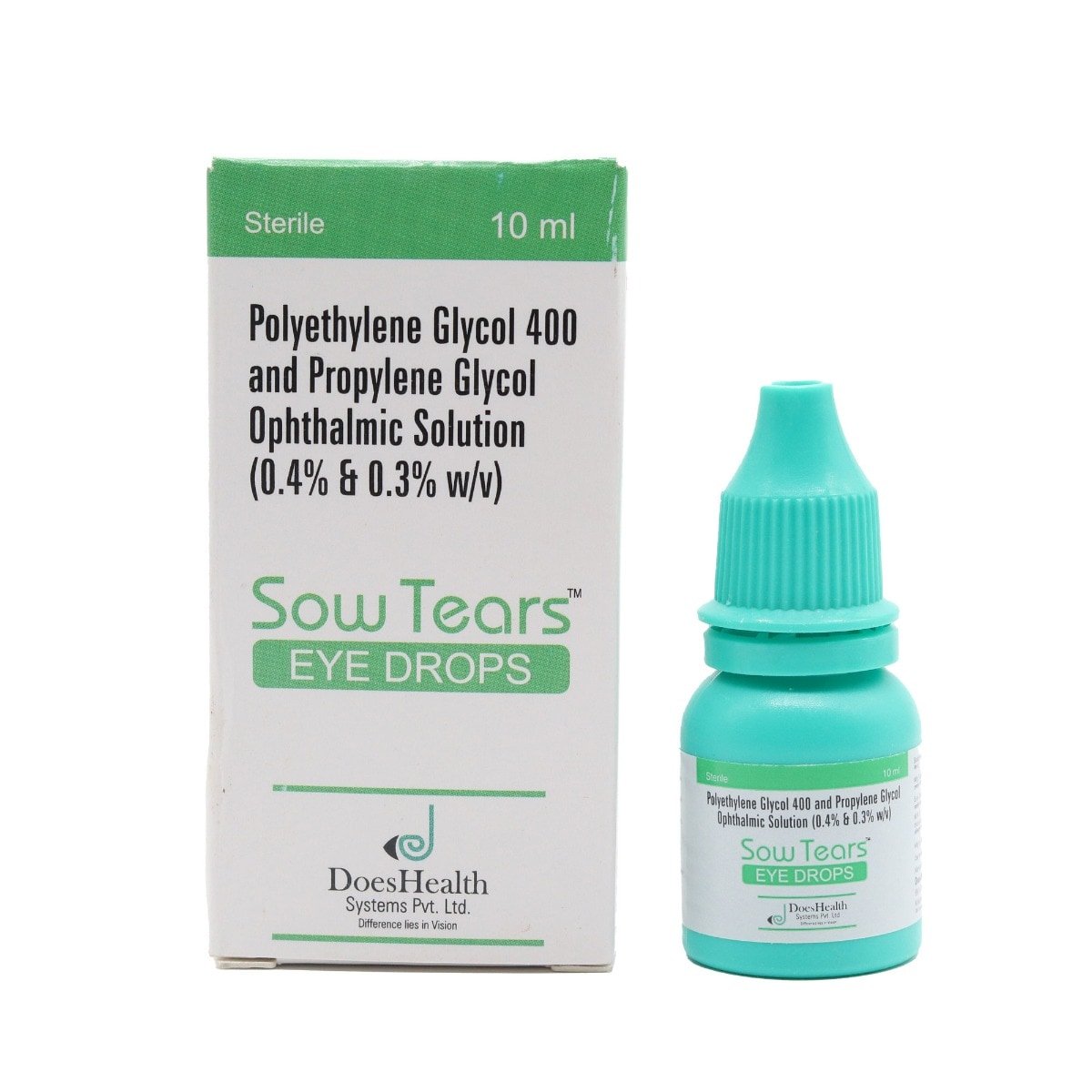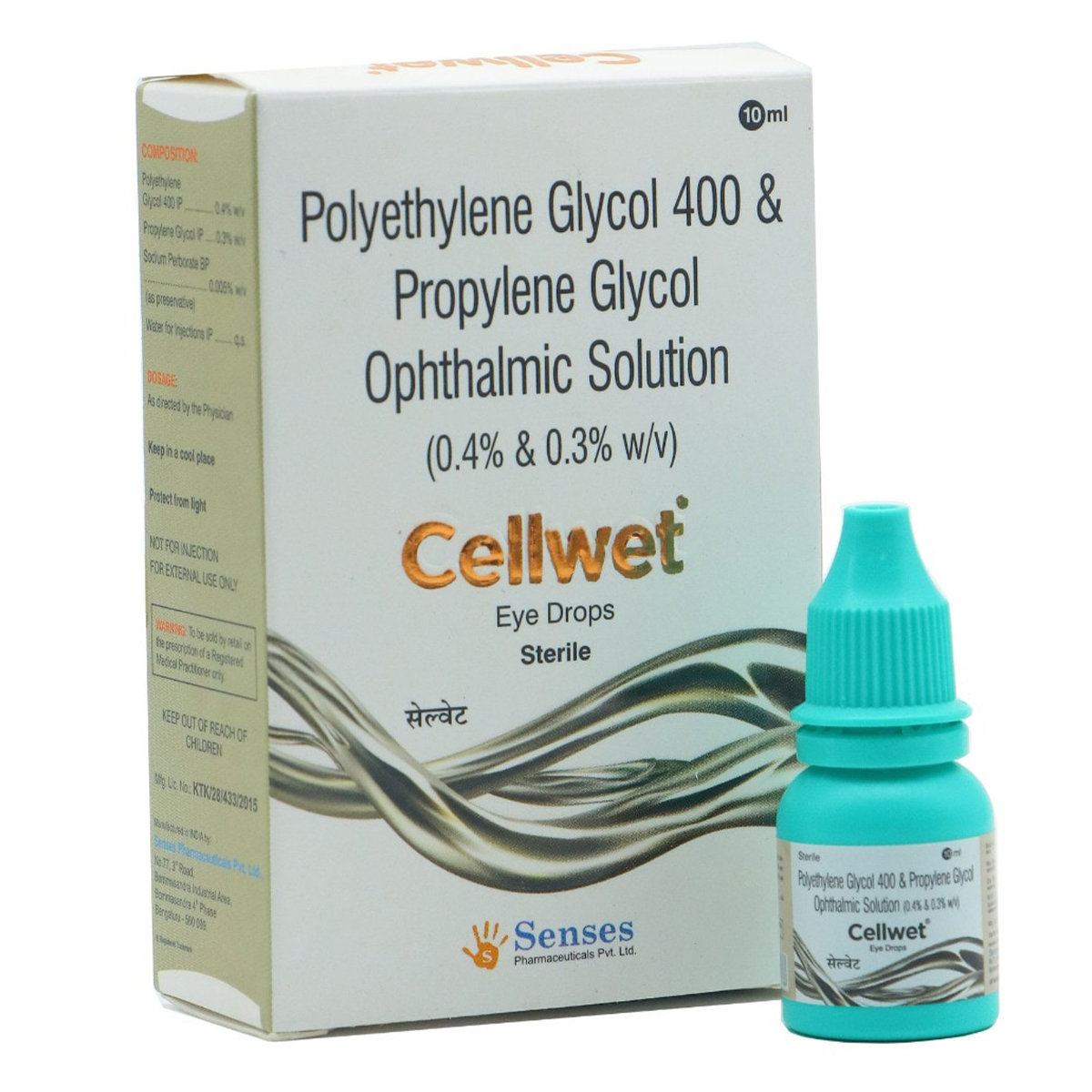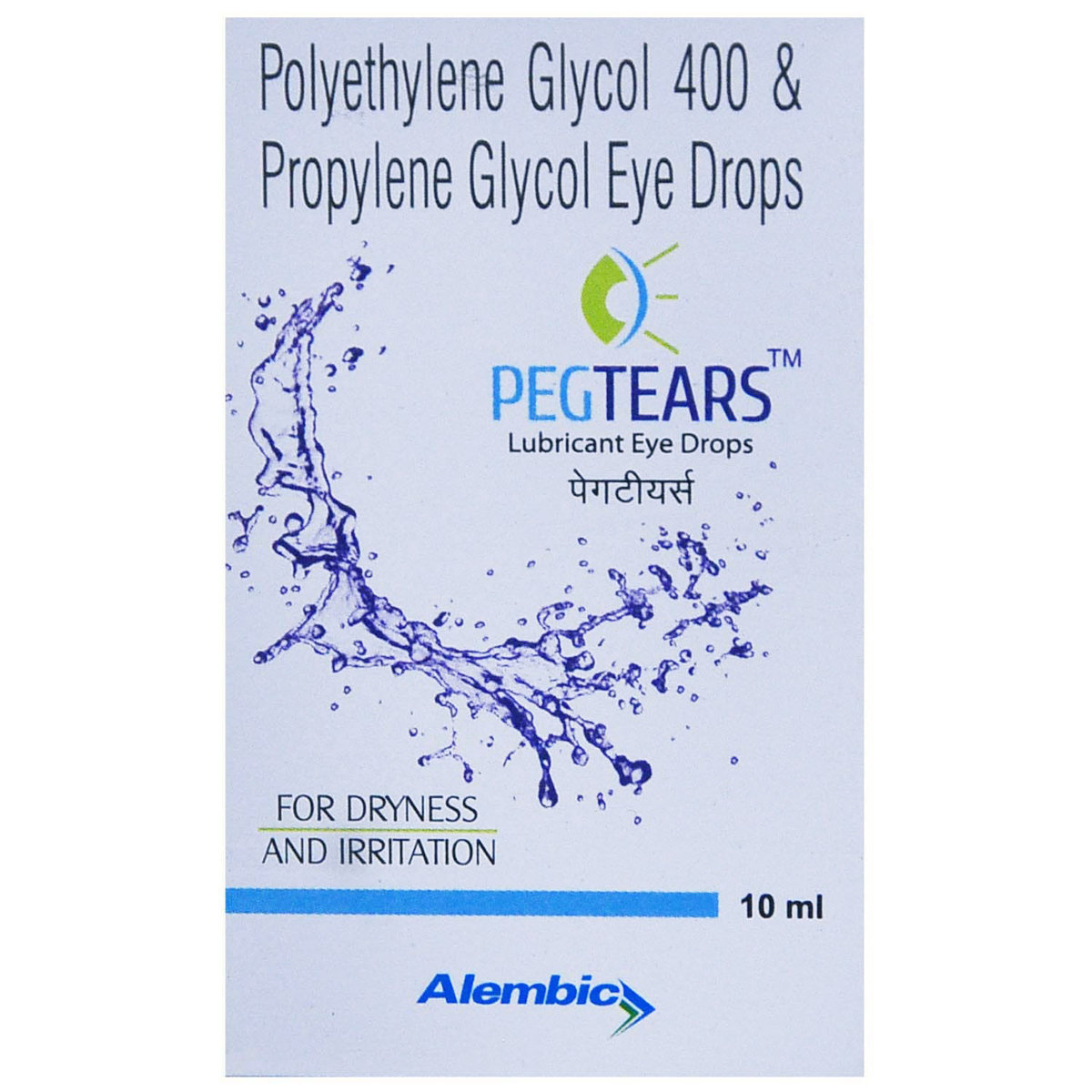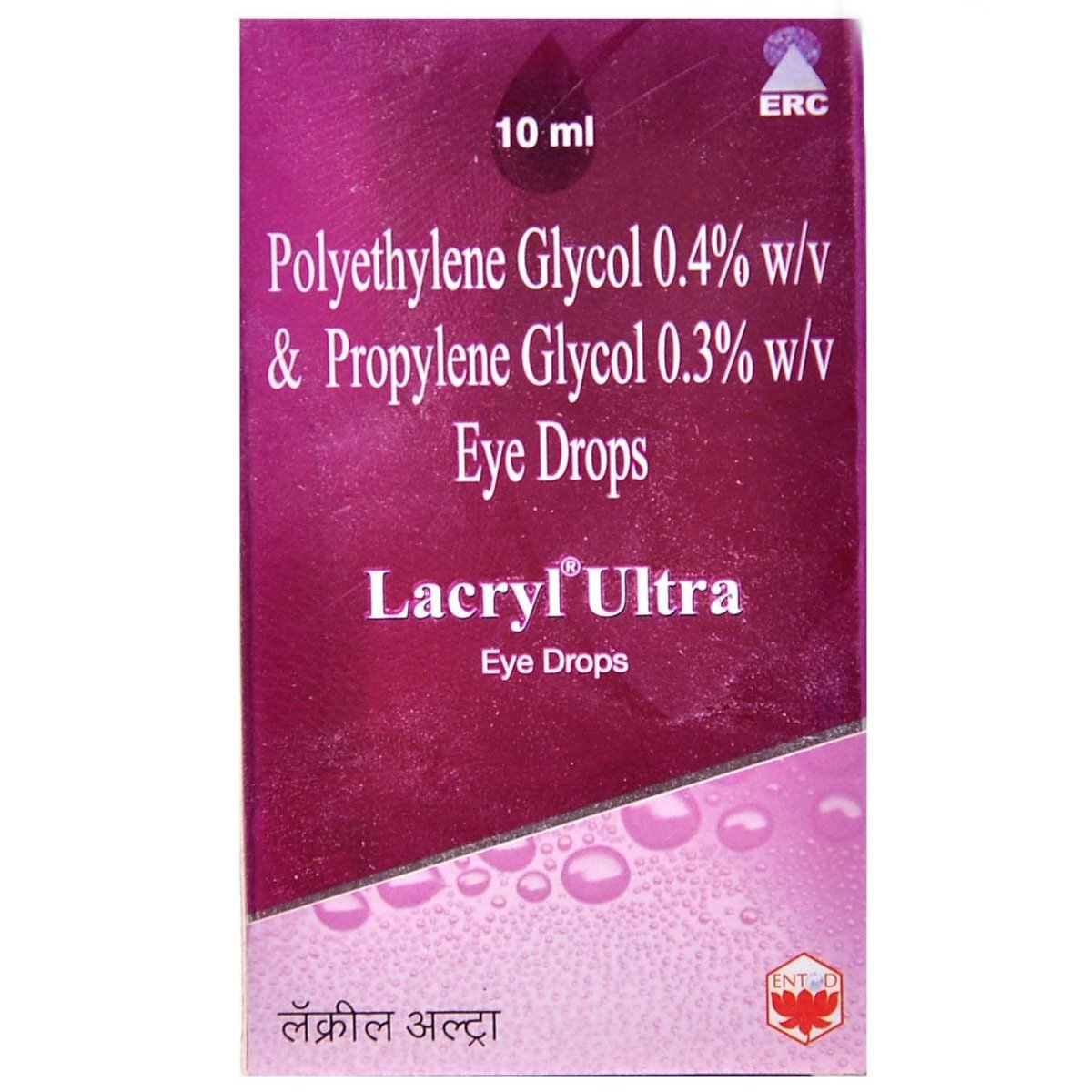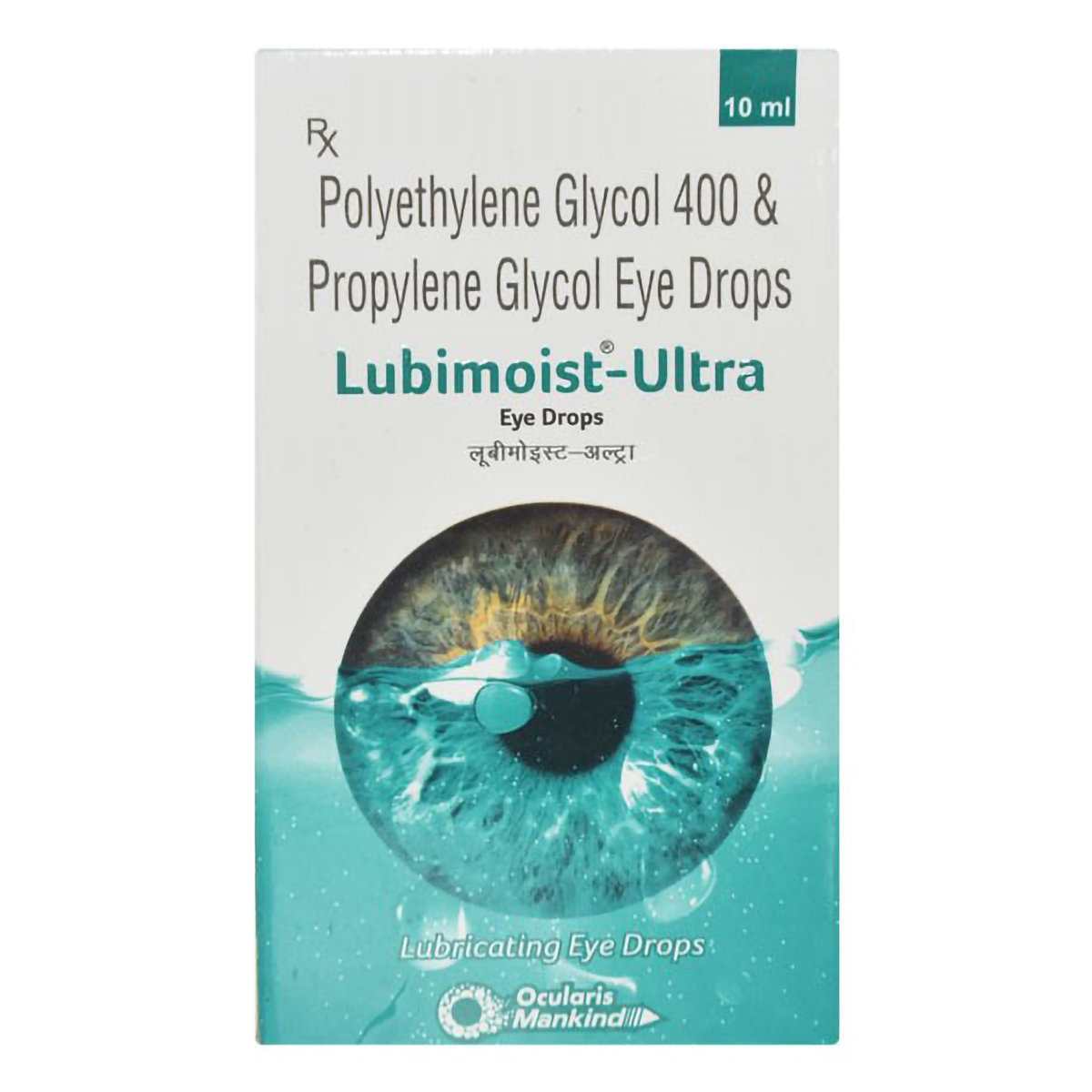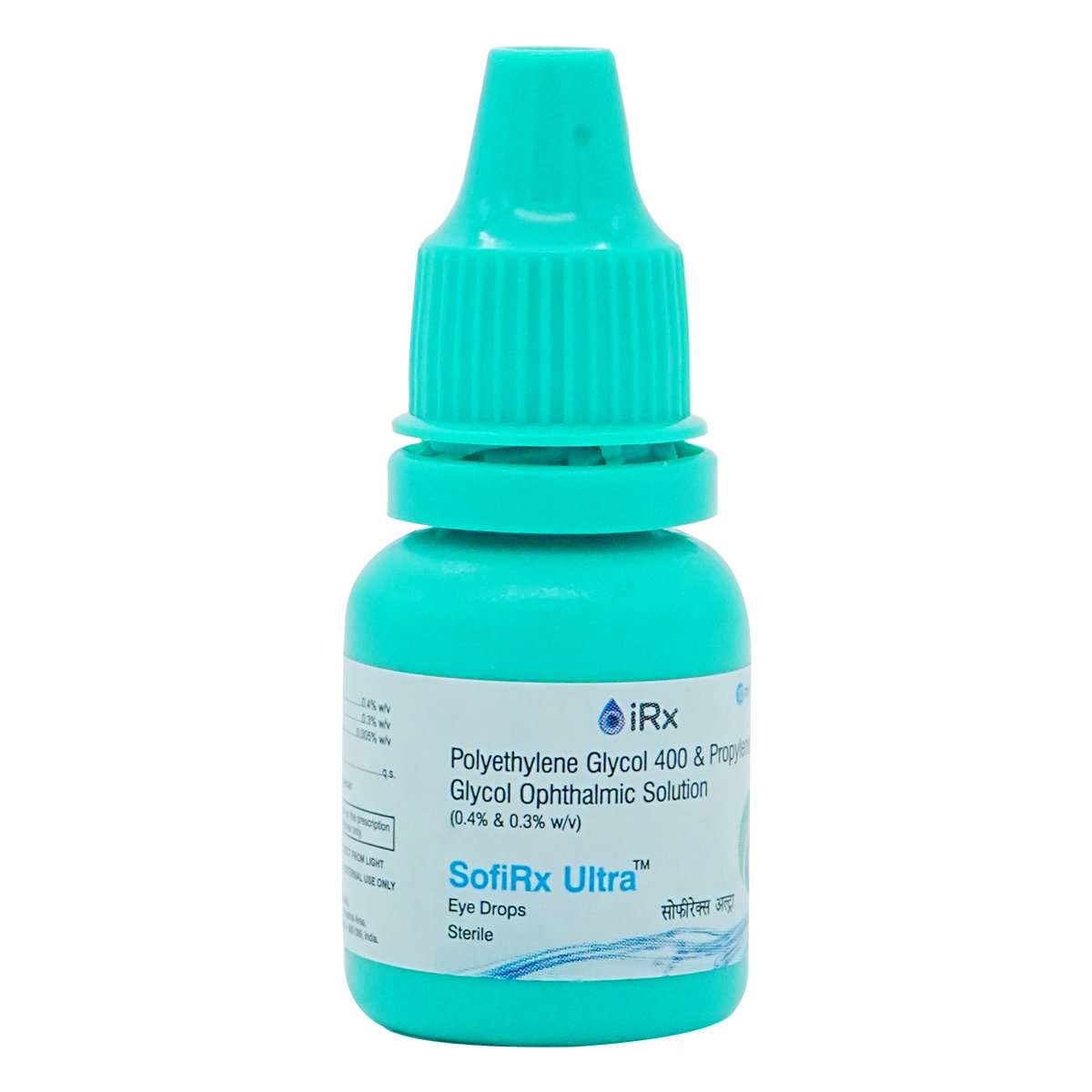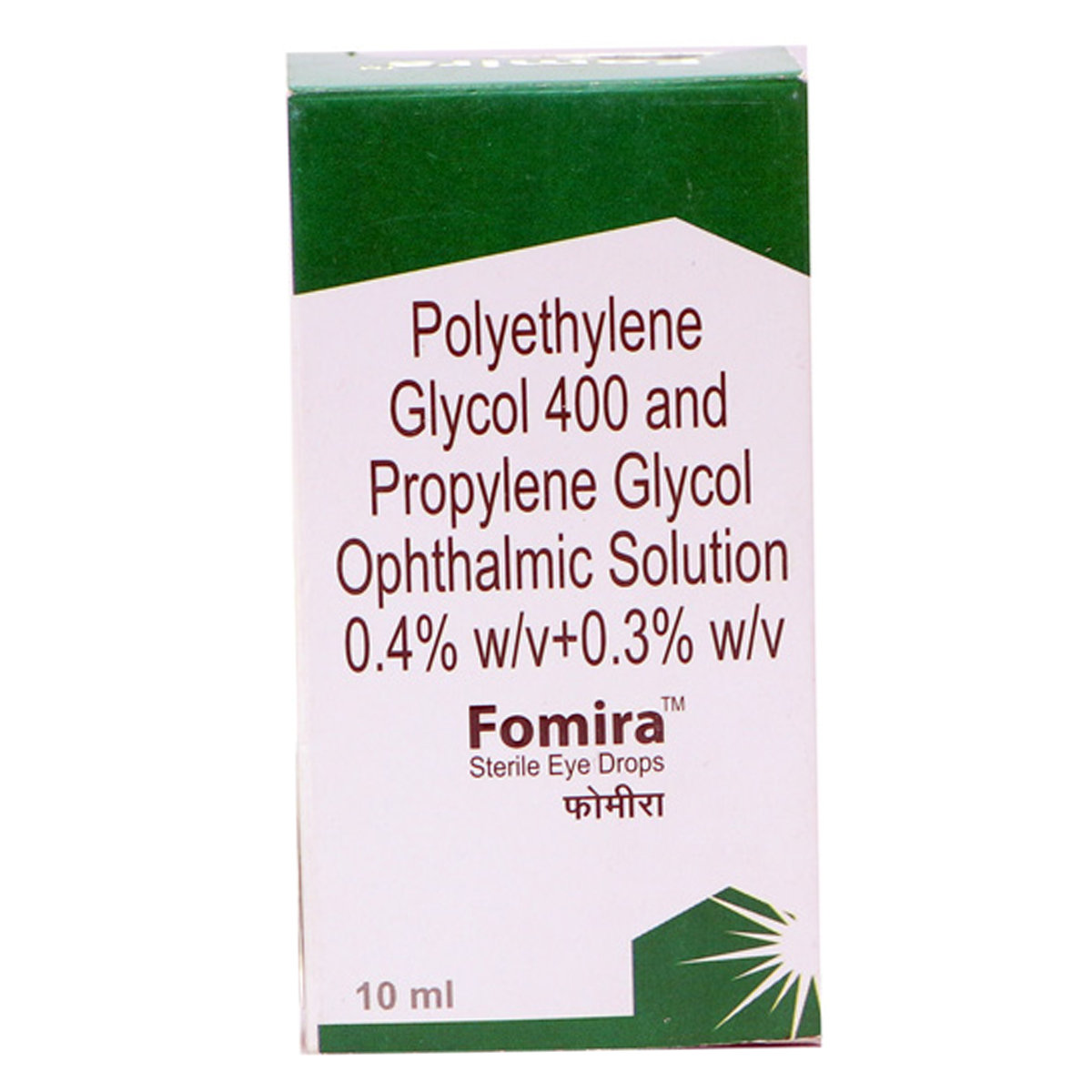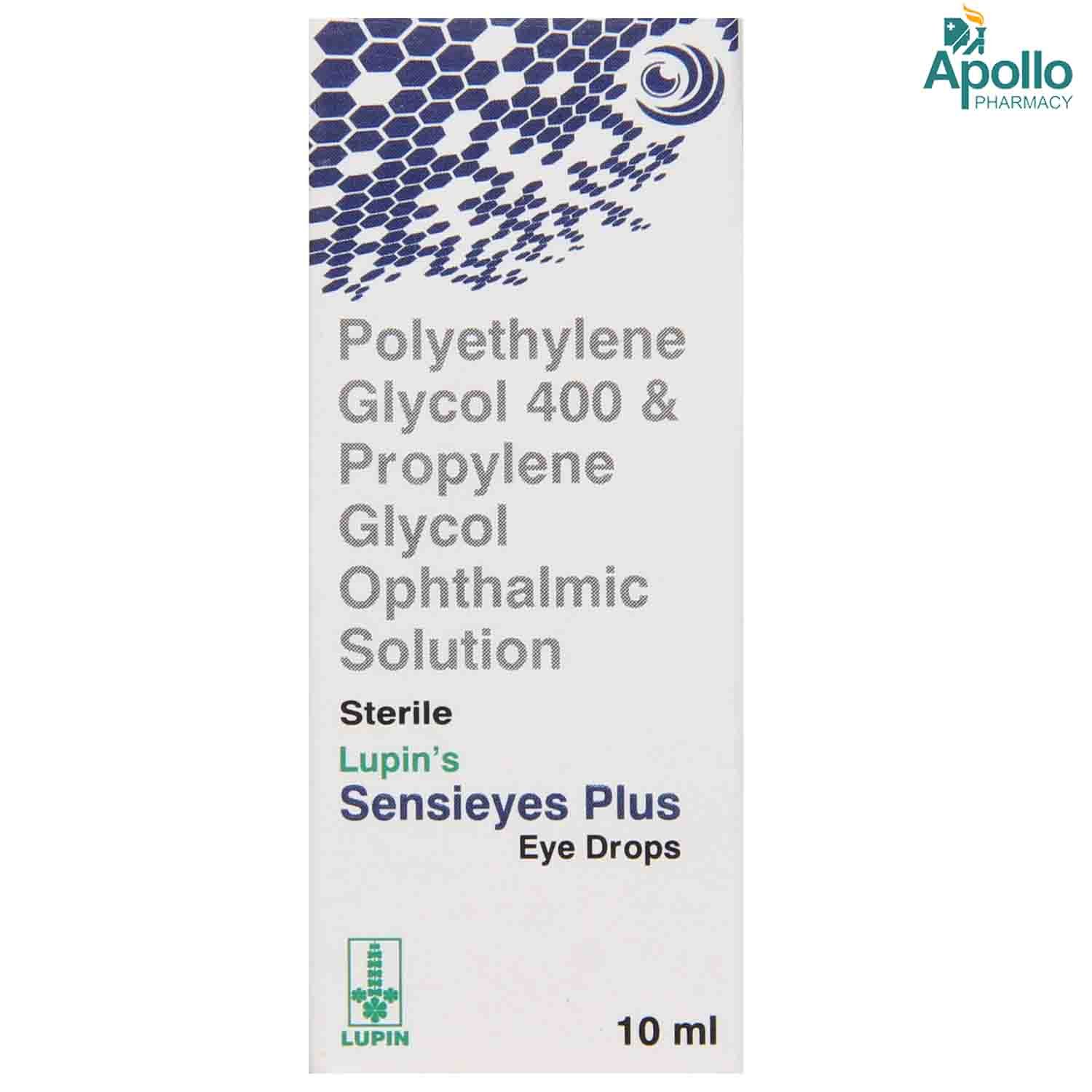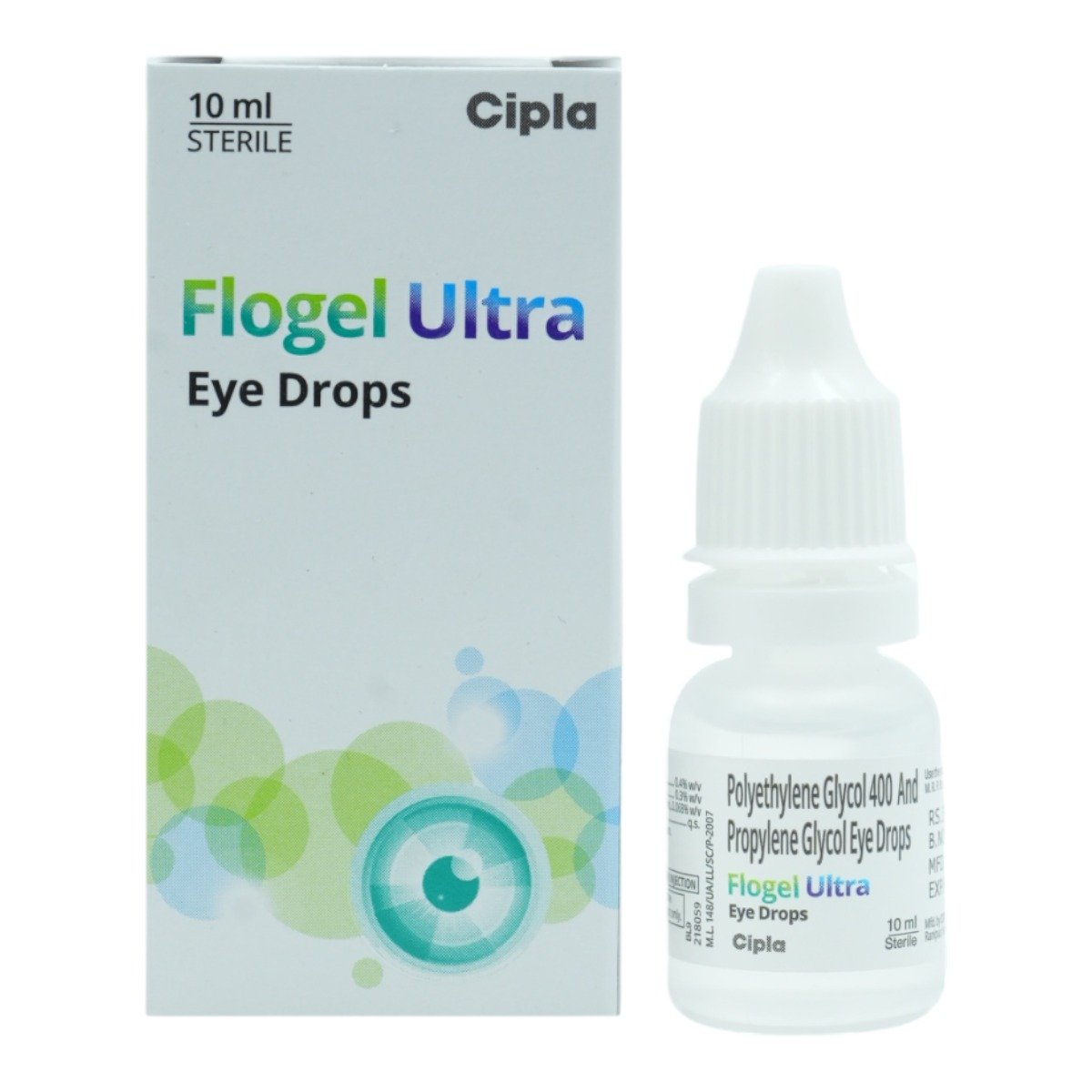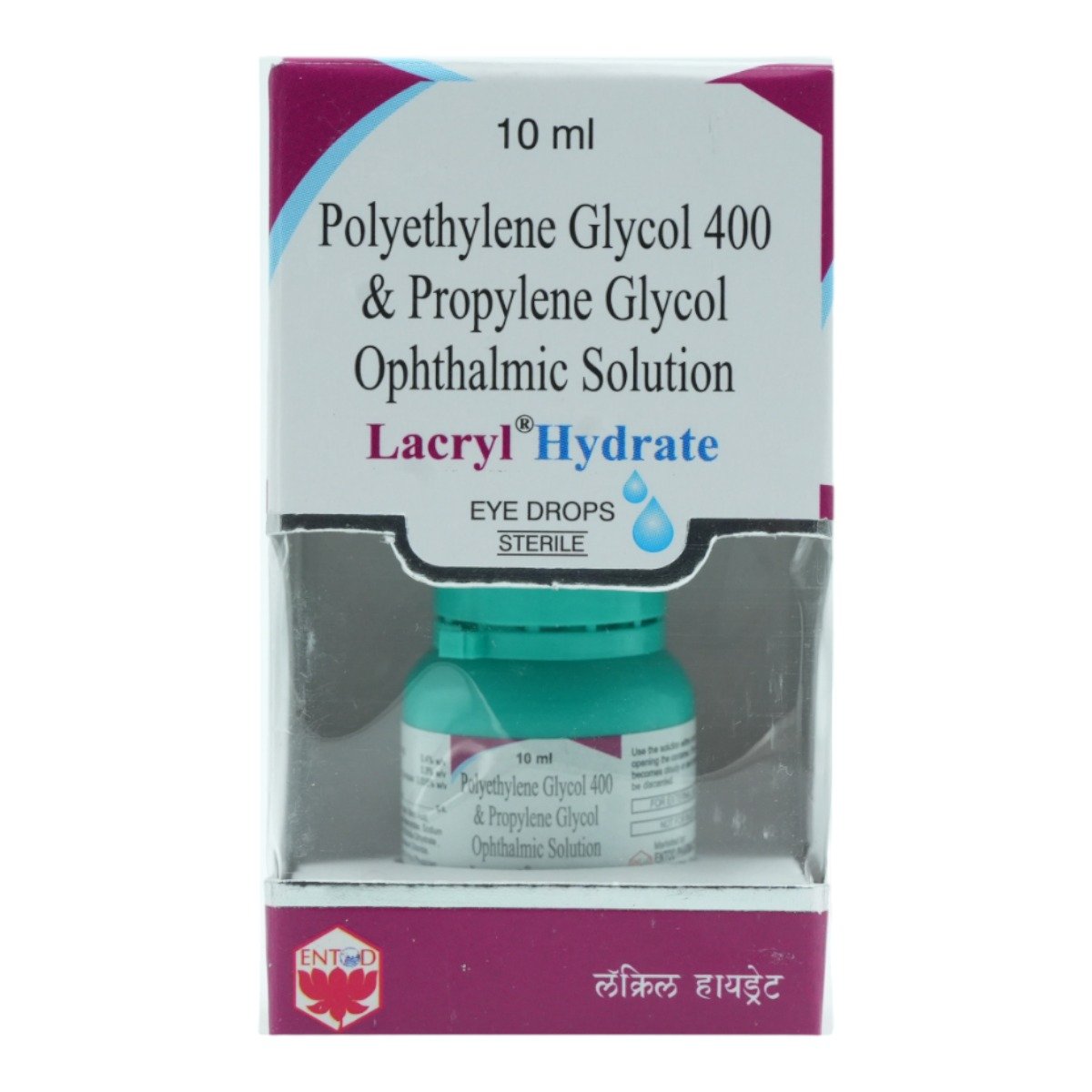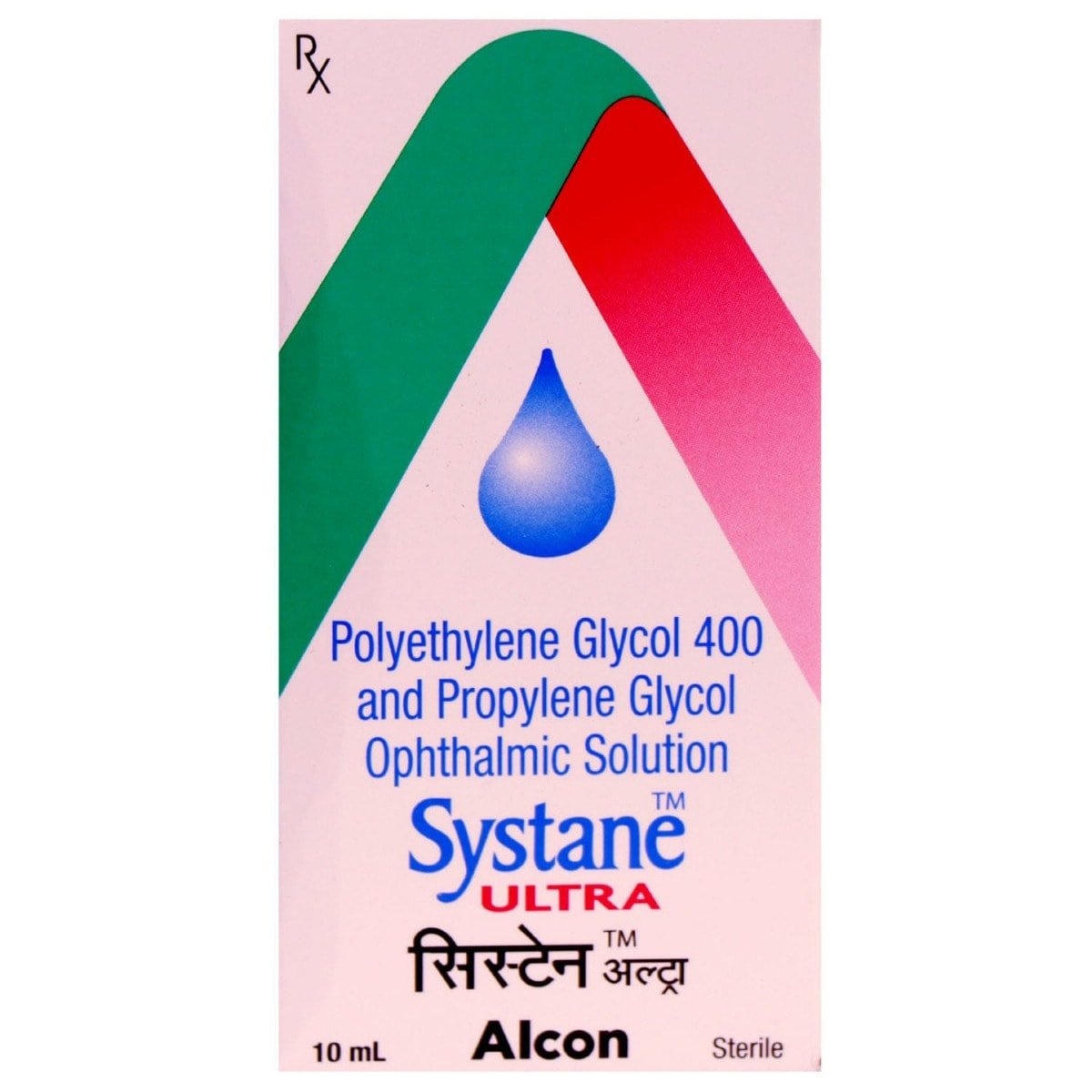Glylene Eye Drops 10 ml

MRP ₹262.5
(Inclusive of all Taxes)
₹39.4 Cashback (15%)
About Glylene Eye Drop
Glylene Eye Drop belongs to the class of medications called ‘eye lubricants used to relieve symptoms of dry eyes temporarily. Dry eye is a condition commonly due to allergic eye diseases or eye infections, wind, heating/air conditioning, and certain medications.
Glylene Eye Drop is a combination of two lubricating medicines, polyethylene glycol and propylene glycol, that help treat dry eyes. Polyethene glycol and propylene glycol work similarly to natural tears and temporarily relieve burning and irritation due to dry eyes.
Glylene Eye Drop is available for external use only in the form of eye drops. You should take this medicine as advised by your doctor. The common side-effects of Glylene Eye Drop are application site reactions such as burning/stinging sensation or redness in the eye, itching, irritation, and blurred vision. These side effects are usually mild and temporary. Consult your doctor if these side effects persist.
Do not take Glylene Eye Drop if you are allergic to Glylene Eye Drop or other contents. Before taking Glylene Eye Drop, inform your doctor if you have glaucoma (a condition with increased pressure in the eye), ulcers in the eye, have undergone or are scheduled for eye surgery, or have any other eye problems. Inform your doctor if you are pregnant or breastfeeding.
Country of origin
Manufacturer/Marketer address
Online payment accepted

secured payment

india's most trusted pharmacy

genuine products
Composition :
Manufacturer/Marketer :
Consume Type :
Expires on or after :
Return Policy :
Available Offers
Provide Delivery Location
About Glylene Eye Drop
Glylene Eye Drop belongs to the class of medications called ‘eye lubricants used to relieve symptoms of dry eyes temporarily. Dry eye is a condition commonly due to allergic eye diseases or eye infections, wind, heating/air conditioning, and certain medications.
Glylene Eye Drop is a combination of two lubricating medicines, polyethylene glycol and propylene glycol, that help treat dry eyes. Polyethene glycol and propylene glycol work similarly to natural tears and temporarily relieve burning and irritation due to dry eyes.
Glylene Eye Drop is available for external use only in the form of eye drops. You should take this medicine as advised by your doctor. The common side-effects of Glylene Eye Drop are application site reactions such as burning/stinging sensation or redness in the eye, itching, irritation, and blurred vision. These side effects are usually mild and temporary. Consult your doctor if these side effects persist.
Do not take Glylene Eye Drop if you are allergic to Glylene Eye Drop or other contents. Before taking Glylene Eye Drop, inform your doctor if you have glaucoma (a condition with increased pressure in the eye), ulcers in the eye, have undergone or are scheduled for eye surgery, or have any other eye problems. Inform your doctor if you are pregnant or breastfeeding.
Uses of Glylene Eye Drop
Key Benefits
Glylene Eye Drop is a combination of two lubricating medicines, polyethylene glycol and propylene glycol, that help treat dry eyes. Polyethene glycol and propylene glycol work similarly to natural tears and temporarily relieve burning and irritation due to dry eyes.
Directions for Use
Storage
Side Effects of Glylene Eye Drop
- Itching
- Irritation
- Blurred vision
- Stinging sensation
Drug Warnings
Before taking Glylene Eye Drop, inform your doctor if you are using any other eye drops or ointment. Do not use Glylene Eye Drop for other indications without consulting your doctor. Do not use Glylene Eye Drop for longer than your doctor recommends. Inform your doctor immediately if you experience persistent visual disturbances while using Glylene Eye Drop. Do not wear contact lenses while using Glylene Eye Drop as it may affect your recovery. Inform your doctor if you experience eye pain, continued redness, or eye irritation or if your condition worsens or persists for more than 72 hours after using the Glylene Eye Drop.
Drug Interactions
Drug-drug interactions: No interactions found.
Drug-food interactions: No interactions found.
Drug-disease interactions: No interactions found.
Habit Forming
Diet & Lifestyle Advise
- Sleep for at least six to eight hours to rejuvenate your eyes naturally.
- Wash your eyes with clean water at least two to three times a day.
- Manage stress, eat healthily, drink plenty of water, exercise regularly, and get plenty of sleep.
- Avoid alcoholic beverages as they can make you dehydrated and affect your sleep. This effect can also affect your body’s ability in fighting off infections.
- Reduce screen time (by avoiding watching tv, or phone) and use sunglasses while going out into the sunlight.
Special Advise
- If you use any other eye drops or ointments, leave about ten minutes between applying each one.
Disease/Condition Glossary
Dry eyes: Dry eye, also called xeropthalmia, is a condition that occurs when there is not enough lubrication in the eye due to decreased production of tears or production of low-quality tears. This condition may lead to inflammation and damage to the eye. Symptoms include a burning or stinging sensation in the eye, eye irritation, sensitivity to light, redness, and blurred vision. It may occur due to ageing, allergic eye diseases, thyroid problems, vitamin A deficiency, certain medications and eyelid problems.
FAQs
Glylene Eye Drop is a combination of two lubricating medicines, polyethylene glycol and propylene glycol, that help treat dry eyes. Polyethene glycol and propylene glycol work similarly to natural tears and temporarily relieve burning and irritation due to dry eyes.
If you are using other eye drops along with Glylene Eye Drop, maintain an interval of at least 5 to 10 minutes before administering other medicines in the same eye to avoid dilution.
Dry eyes may cause blurred vision due to a decrease in tear production in the eye. However, it doesn't cause permanent disturbances to your vision. The vision improves with the use of eye drops or when your eye condition improves.
The common side-effects of Glylene Eye Drop are application site reactions such as burning/stinging sensation or redness in the eye, increased eye sensitivity to the light, blurred vision and watery eyes.
Do not wear contact lenses while using Glylene Eye Drop and discard the eye drops after completing the course of therapy or within one month after opening the bottle. Glylene Eye Drop may cause sensitivity to light, so wear sunglasses while going outside during the daytime.
Disclaimer
Product Substitutes
Alcohol
Safe if prescribed
It is advised to avoid alcohol intake during the course.
Pregnancy
Consult your doctor
Glylene Eye Drop can be used in pregnant women only when advised by a healthcare professional.
Breast Feeding
Consult your doctor
Glylene Eye Drop can be used in breastfeeding mothers only when advised by a healthcare professional.
Driving
Safe if prescribed
Glylene Eye Drop may cause vision problems. So, avoid driving or operating heavy machinery until your vision clears.
Liver
Consult your doctor
Glylene Eye Drop can be used in patients with liver diseases when advised by an ophthalmologist.
Kidney
Consult your doctor
Glylene Eye Drop can be used in patients with kidney diseases when advised by an ophthalmologist.
Children
Safe if prescribed
Glylene Eye Drop can be used in children only when advised by an ophthalmologist.
Uses of Glylene Eye Drop
Key Benefits
Glylene Eye Drop is a combination of two lubricating medicines, polyethylene glycol and propylene glycol, that help treat dry eyes. Polyethene glycol and propylene glycol work similarly to natural tears and temporarily relieve burning and irritation due to dry eyes.
Directions for Use
Storage
Drug Warnings
Before taking Glylene Eye Drop, inform your doctor if you are using any other eye drops or ointment. Do not use Glylene Eye Drop for other indications without consulting your doctor. Do not use Glylene Eye Drop for longer than your doctor recommends. Inform your doctor immediately if you experience persistent visual disturbances while using Glylene Eye Drop. Do not wear contact lenses while using Glylene Eye Drop as it may affect your recovery. Inform your doctor if you experience eye pain, continued redness, or eye irritation or if your condition worsens or persists for more than 72 hours after using the Glylene Eye Drop.
Therapeutic Class
Diet & Lifestyle Advise
- Sleep for at least six to eight hours to rejuvenate your eyes naturally.
- Wash your eyes with clean water at least two to three times a day.
- Manage stress, eat healthily, drink plenty of water, exercise regularly, and get plenty of sleep.
- Avoid alcoholic beverages as they can make you dehydrated and affect your sleep. This effect can also affect your body’s ability in fighting off infections.
- Reduce screen time (by avoiding watching tv, or phone) and use sunglasses while going out into the sunlight.
Habit Forming
Side Effects of Glylene Eye Drop
- Itching
- Irritation
- Blurred vision
- Stinging sensation
Special Advise
- If you use any other eye drops or ointments, leave about ten minutes between applying each one.
Disease/Condition Glossary
Dry eyes: Dry eye, also called xeropthalmia, is a condition that occurs when there is not enough lubrication in the eye due to decreased production of tears or production of low-quality tears. This condition may lead to inflammation and damage to the eye. Symptoms include a burning or stinging sensation in the eye, eye irritation, sensitivity to light, redness, and blurred vision. It may occur due to ageing, allergic eye diseases, thyroid problems, vitamin A deficiency, certain medications and eyelid problems.
All Substitutes & Brand Comparisons
RX
Sow Tears Eye Drop 10 ml
Does Health Systems Pvt Ltd
₹218
(₹19.62/ 1ml)
16% CHEAPERRX
Optimoist Ultra Eye Drops 10 ml
Neomedix Healthcare India Pvt Ltd
₹342
(₹30.78/ 1ml)
30% COSTLIERRX
Cellwet Eye Drops 10 ml
Senses Pharmaceuticals Pvt Ltd
₹342
(₹30.78/ 1ml)
30% COSTLIER

Have a query?
Buy best Ocular products by
Entod Pharmaceuticals Ltd
Ajanta Pharma Ltd
Sunways (India) Pvt Ltd
Sun Pharmaceutical Industries Ltd
Cipla Ltd
Micro Labs Ltd
Allergan Healthcare India Pvt Ltd
Intas Pharmaceuticals Ltd
Raymed Pharmaceuticals Ltd
Nri Vision Care India Ltd
FDC Ltd
Jawa Pharmaceuticals India Pvt Ltd
Indoco Remedies Ltd
Sapient Laboratories Pvt Ltd
Senses Pharmaceuticals Pvt Ltd
Centaur Pharmaceuticals Pvt Ltd
Neomedix Healthcare India Pvt Ltd
Aromed Pharmaceuticals
Optho Remedies Pvt Ltd
Aurolab
Austrak Pvt Ltd
Lupin Ltd
Mankind Pharma Pvt Ltd
Zivira Labs Pvt Ltd
Optho Pharma Pvt Ltd
Synovia Life Sciences Pvt Ltd
Akumentis Healthcare Ltd
Eyekare
His Eyeness Ophthalmics Pvt Ltd
Protech Remedies Pvt Ltd
Runyon Pharmaceutical Pvt Ltd
Alcon Laboratories Inc
Syntho Pharmaceuticals Pvt Ltd
Alembic Pharmaceuticals Ltd
Bell Pharma Pvt Ltd
Klar Sehen Pvt Ltd
Sentiss Pharma Pvt Ltd
Irx Pharmaceuticals Pvt Ltd
Optho Life Sciences Pvt Ltd
Phoenix Remedies Pvt Ltd
Alkem Laboratories Ltd
Doctor Wonder Pvt Ltd
Hicare Pharma
Ipca Laboratories Ltd
Neon Laboratories Ltd
Okulus Drugs India
Pharmtak Ophthalmics (I) Pvt Ltd
Berry & Herbs Pharma Pvt Ltd
Glow Vision Pharmaceuticals
Kaizen Drugs Pvt Ltd
Choroid Laboratories Pvt Ltd
Indiana Opthalamics Pvt Ltd
Optica Pharmaceutical Pvt Ltd
Pharmatak Opthalmics India Pvt Ltd
Samarth Life Sciences Pvt Ltd
Vibgyor Vision Care
Mofon Drugs
Novartis India Ltd
Pharmia Biogenesis Pvt Ltd
Zydus Cadila
Appasamy Ocular Devices Pvt Ltd
Leeford Healthcare Ltd
Medivision Pharma Pvt Ltd
Orbit Life Science Pvt Ltd
X-Med Royal Pharma Pvt Ltd
Zee Laboratories Ltd
Aarma Laboratories
Guerison MS Inc
Laborate Pharmaceuticals India Ltd
Xtas Pharmaceuticals
Accurex Biomedical Pvt Ltd
Blucrab Pharma Pvt Ltd
Does Health Systems Pvt Ltd
Flagship Biotech International Pvt Ltd
Lavue Pharmaceuticals Pvt Ltd
Nutrilis Healthcare Pvt Ltd
Ursa Pharm India Pvt Ltd
Vee Remedies
Vyonics Health Care India Pvt Ltd
Warren Pharmaceuticals Pvt Ltd
Abbott India Ltd
Accvus Pharmaceuticals
Akums Drugs & Pharmaceuticals Ltd
Cadila Healthcare Ltd
Carevision Pharmaceuticals Pvt Ltd
Dey's Medical Stores (Mfg) Ltd
East West Pharma India Pvt Ltd
Eyedea Pharmaceuticals Pvt Ltd
Nimbus Healthcare Pvt Ltd
Ocuris Pharmaceuticals Pvt Ltd
Sherings Pharmaceuticals
Tarks Pharmaceuticals Pvt Ltd
Vcan Biotech
Vision Medilink
Aice Health Care Pvt Ltd
Appasamy Pharmaceuticals Pvt Ltd
Asperia Lifescience Pvt Ltd
Beatum Healthcare Pvt Ltd
East India Pharmaceutical Works Ltd
Grevis Pharmaceutical Pvt Ltd









